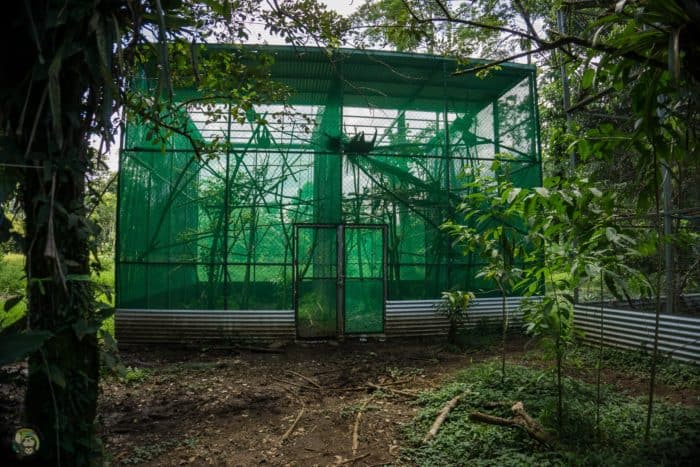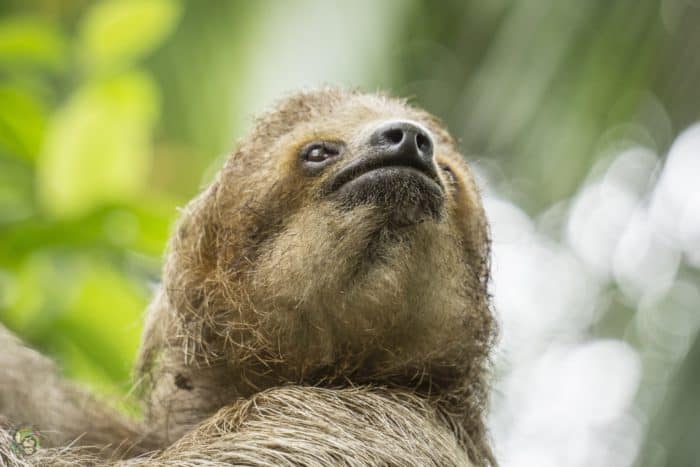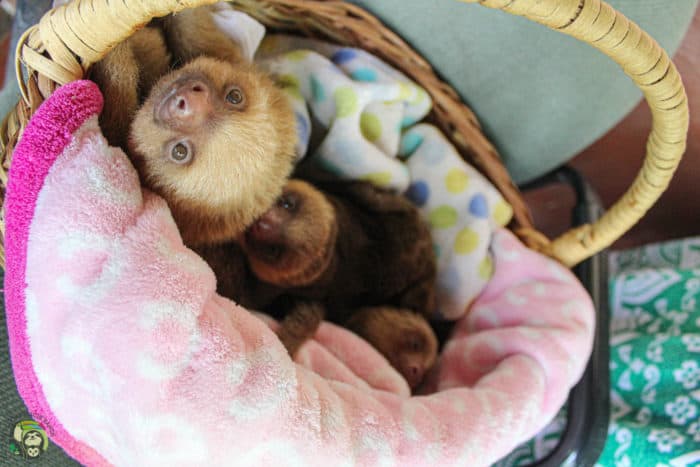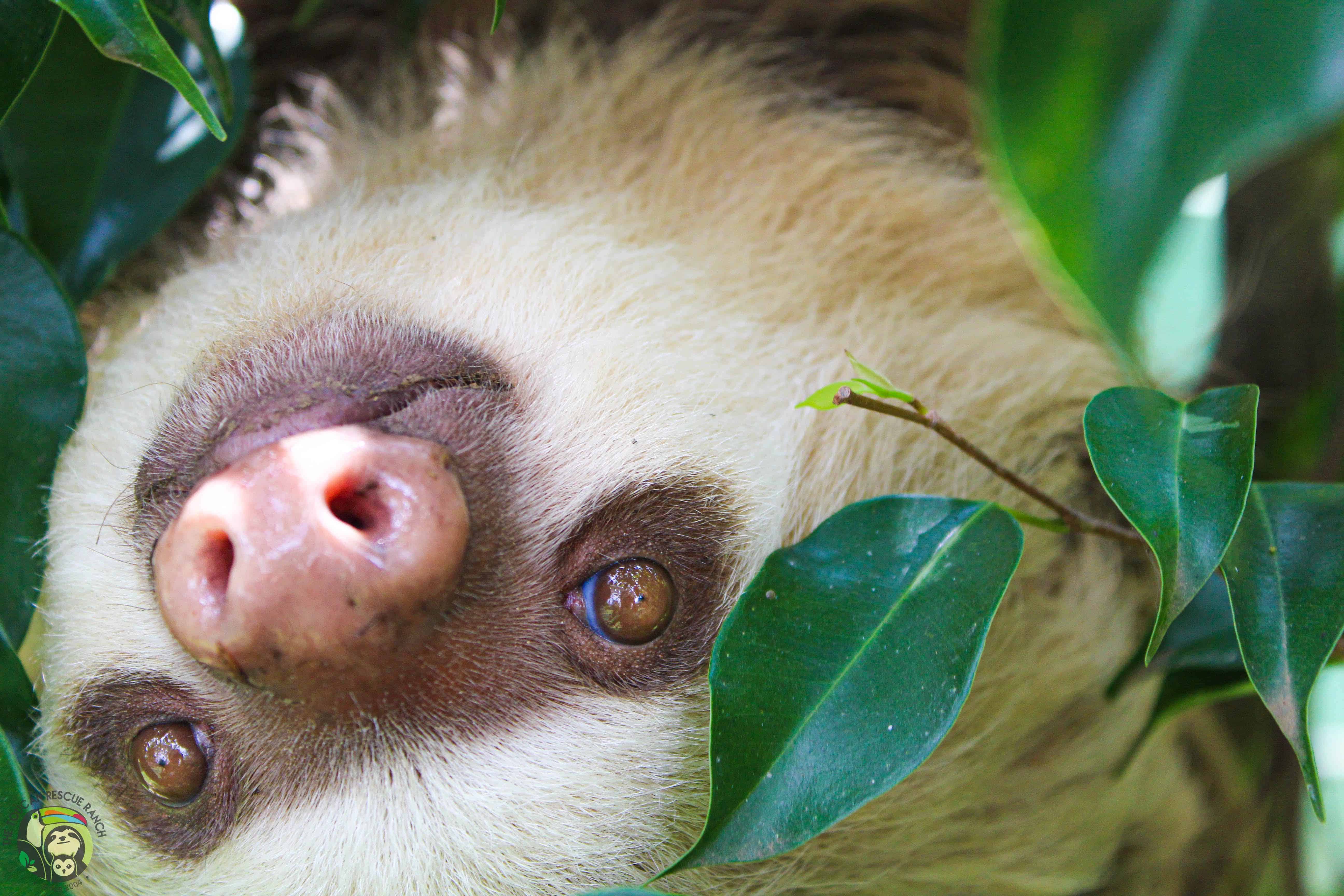Sloths, as many of us are aware, are fascinating animals. Here at the Toucan Rescue Ranch (TRR), we receive mostly Hoffman’s two-toed (two-fingered) sloths. This is due in part to the fact that they do better at the higher altitudes and cooler temperatures found at the location of TRR than the three-toed (three-fingered) sloths, who are much more fragile as a species.
Toucan Rescue Ranch and The Sloth Institute prefer to call them two-fingered and three-fingered sloths since ALL sloths have three toes – the difference is in the number of claws in their hands.
All of the young sloths in TRR’s care at this time, ranging in age from a couple of months to 14 months old, are Hoffman’s two-fingered sloths.
The four older adolescent sloths, Adele, Huey, Goldie, and Twix, are about one-and-a-half years old and are considered ‘high schoolers,’ which means they will be the next group to move up to a large pre-release enclosure, known as Sloth University, located at our Release Site in Sarapiquí, Costa Rica.
For the last six months, they have had very limited contact with their caretakers and are becoming wilder and more independent as time passes.

Sloths don’t become habituated as other animals do, so even though they were all hand-raised from a young age, they revert back to a wild state very easily.
This makes our job both harder and easier. Harder since, by the time they are transferred to either of our two release sites, they can be quite aggressive, even with those of us who cared for them when they were babies.
It’s easier because our ultimate goal is to ensure that all of the animals we release will not want to ever interact with humans and have a long and healthy life independently in the wild.

While the few three-fingered sloths we might receive on occasion are not as aggressive as their two-fingered counterparts, they are a much more timid animal, so we are quite certain that they will have no interest in being anywhere near humans.
The next group of youngsters that will eventually follow these older four to the Release Site is the group of five elementary students: Anise, Phoebe, Rachel, Arya, and Bon Jovi.
They are all approximately a year old, and while they are still somewhat accustomed to a few of us who worked with them since they were very young, we are also noticing a shift in their behavior towards wilder tendencies.

This subtle change is a good sign that they are right on track, paralleling the behavior of their wild counterparts of the same age, who would be becoming more independent from their mothers as well.
Wild sloths completely separate from their mothers at two years of age, and our hand-raised babies, who by that age have already broken their bond with us, also begin to sever ties with each other. By the time they are released, radio collars in place, their exit to the rainforest will be a solitary one.
While it may seem like a rather lonely life to us, it is the preference of a wild sloth. Those of us who have raised these orphans anxiously await the news of wild sloth behaviors, exhibited by rescued babies, and reported to us by the team of Saving Sloths Together technicians, who go out every night to track their movements and behavior.
After all, rescuing, rehabilitating, and releasing sloths (and any animal, for that matter), takes a village.
— Denise Gillen is a Wildlife Nanny at Toucan Rescue Ranch.






